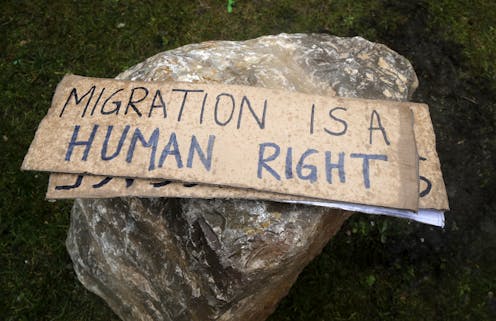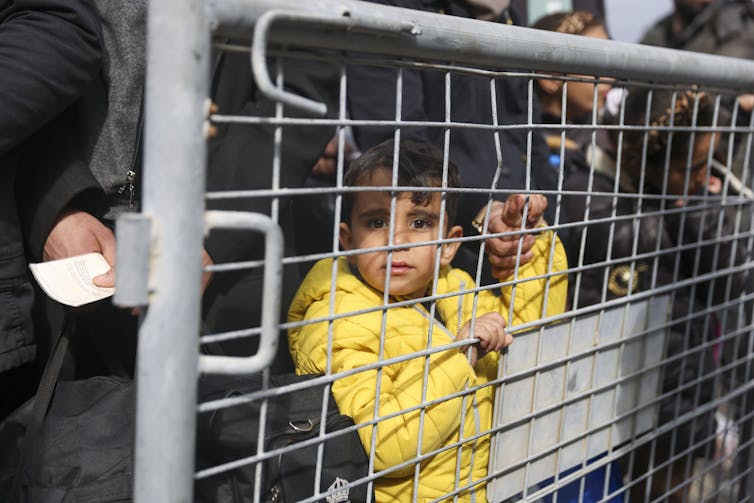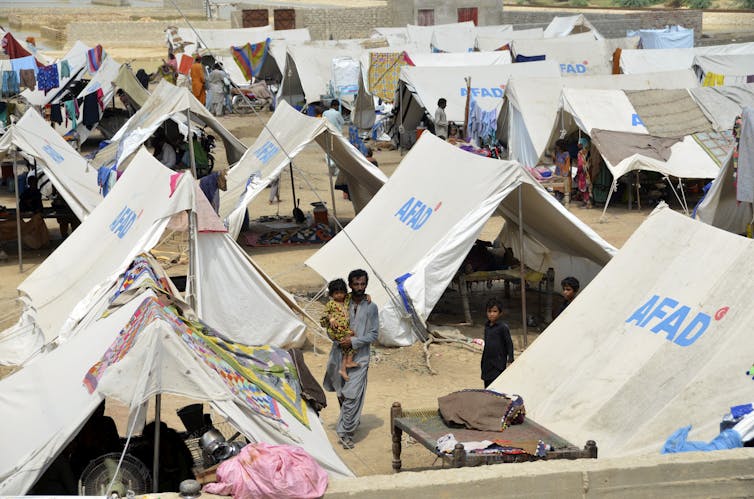
The death toll from the recent earthquakes in Turkey and Syria has reached over 50,000 people. Over 23 million people have been affected and millions have been displaced from their homes. In Syria alone, an estimated 5.3 million people have been left homeless.
In the aftermath of the earthquakes, the international community mobilized to offer humanitarian assistance and countries like Canada, Spain and Germany are expediting visa applications for those displaced.
However, there are already concerns in Germany that earthquake survivors could become embroiled in wider anti-immigrant sentiments; especially as Germany struggles to house the over one million Ukrainian refugees in the country.
These developments come at a time when climate and disaster-induced displacement is ascending on the global policy agenda. With climate change predicted to increase the frequency and intensity of disasters, there is mounting concern about how future displacement and migration will be addressed.

Fearmongering and inaccurate claims
On Feb. 14, UN Secretary-General Antonio Guterres called on the international community to take urgent action on climate change. He said that rising sea levels would lead to a “a mass exodus of entire populations on a biblical scale” and that such a scenario would undermine international peace and stability.
The recognition of the challenges posed by climate-induced displacement is a positive step forward. Yet this framing is problematic for a number of reasons. First, it presents climate migration as a future risk instead of “a present reality that needs to be addressed.”
Second, rhetoric about the threat posed by climate-induced displacement does not accurately portray the reality for most of those affected. Climate change often creates internal displacement before it causes people to be displaced across borders. Of the 23.7 million people displaced by disasters in 2021, over 90 per cent (21.6 million) were internally displaced — meaning they did not cross international borders.
Due to the high financial, social and cultural costs of moving, most climate- or disaster-affected households do not have the means to leave their communities. Understandably, some people, like some Pacific Islanders, simply do not want to leave their communities.
Third, alarming statistics might attract public and political attention, but sensationalist predictions will not necessarily provoke the right kind of response. Threats of mass climate migration can fuel anti-migrant xenophobia and may result in the further securitization of migration.
Lastly, fearmongering about large movements of climate refugees is inaccurate and claims about the number of people displaced by weather-related events are often dubious.
Research has shown that estimates and predictions of people displaced by environmental changes lack any empirical basis. Forecasting is challenging because many developing countries do not have the statistical capacity to monitor migration movements and provide accurate data.
In fact, the often-quoted claim that there could be one billion climate refugees by 2050 is false. It’s based on a misunderstanding of Christian Aid’s 2007 report that predicted there would be one billion refugees and displaced people in total by 2050.
The one billion number is based on an aggregation of projected displacement by conflict (50 million), natural disasters (50 million), development projects (645 million), climate change-related phenomena (250 million) and political persecution (5 million). So the estimated number of people displaced by climate change-related phenomena is 250 million, not one billion.

What’s more, these claims are coming at a time when a significant humanitarian crisis requires countries to open rather than close their doors. Twenty days after the earthquake, Greece fortified its land and sea borders with patrols and called for fences, surveillance and for emergency aid to be sent to Turkey and Syria to prevent refugees from migrating to Europe.
Language matters
When conveying the gravity of the situation before us, language matters. We must be careful when we describe people displaced by climate and weather-related events. The words we use have implications for how people are treated and perceived.
Intuitively, it makes sense to assume that highlighting the challenge of climate-induced displacement will help capture international attention and foster more humane responses.
However, in a context where states are hardening borders and justifying restrictive border controls in the name of security, alarmist notions of a mass exodus reproduce narratives that can lead to harsher responses, as we are seeing in the U.K. with their ban on people arriving on small boats claiming asylum. Narratives of fear risk playing into the hands of the security establishment and anti-migrant groups.
A briefing note created through a collaboration between Pacific Islands Students Fighting Climate Change, 350.org, Friends of the Earth U.S., and the Institute for Policy Studies and Climate and Migration Coalition, offers several alternatives to the current securitized framing.
Instead of using the language of a looming future crisis, or deploying alarming statistics, policymakers should adopt value-based language when they talk about climate- and disaster-induced displacement.
Such an approach would move us away from framing migration as a problem and towards recognizing that it is linked to broader political and economic dynamics that shape human mobility. It helps to humanize those affected and shifts focus towards their human rights and providing safe channels for people on the move.
The authors do not work for, consult, own shares in or receive funding from any company or organization that would benefit from this article, and have disclosed no relevant affiliations beyond their academic appointment.
This article was originally published on The Conversation. Read the original article.







